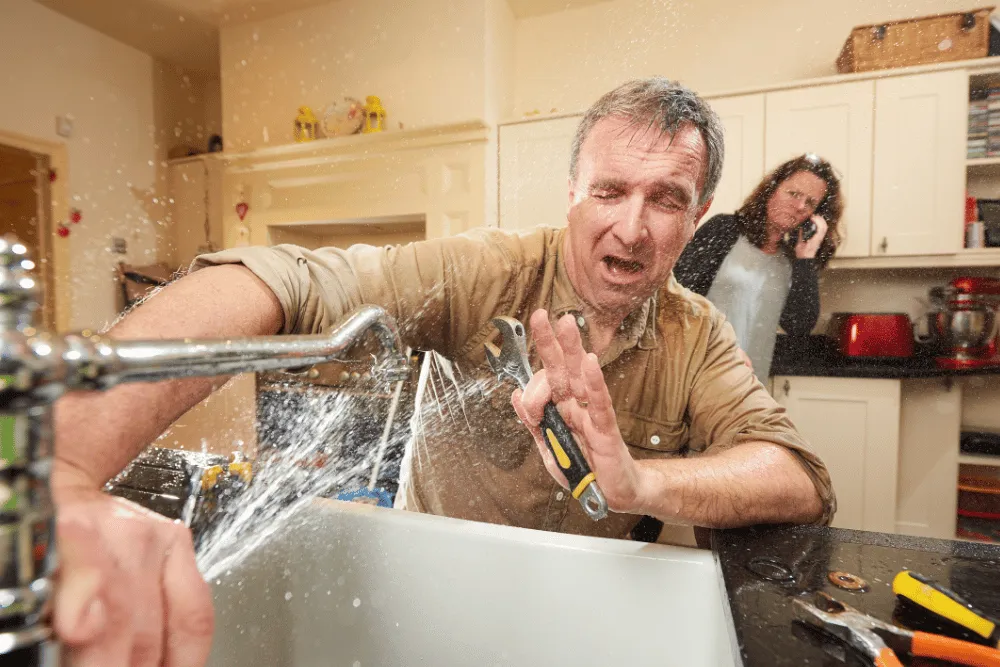
DIY vs. Professional Plumbing: When to Call the Experts
In today’s fast-paced world, homeowners frequently wrestle with the cost, convenience, and effectiveness of plumbing repairs. You may wonder whether to roll up your sleeves and tackle a leaky pipe yourself or trust a professional plumbing service. This article explores the benefits of DIY plumbing projects, weighing them against the advantages of professional plumbers. We will discuss common DIY tasks, essential tools, safety tips, and potential cost savings. In contrast, we also explore the expertise, time savings, and long-term benefits that come with hiring experienced service professionals from platforms such as servicepronation.com, who can often coordinate related services like hvac-services to address additional home repair needs. You will learn about factors like drainage, emergency plumbing repairs, and even minor issues like a leaky faucet or clogged drain while considering homeowners’ maintenance priorities. With rising costs for professional services and increasing DIY resources online, the choice isn’t always straightforward. Before you decide to call a plumber or schedule online repairs, consider the full picture. Let’s dive into the details by comparing the two approaches side by side.
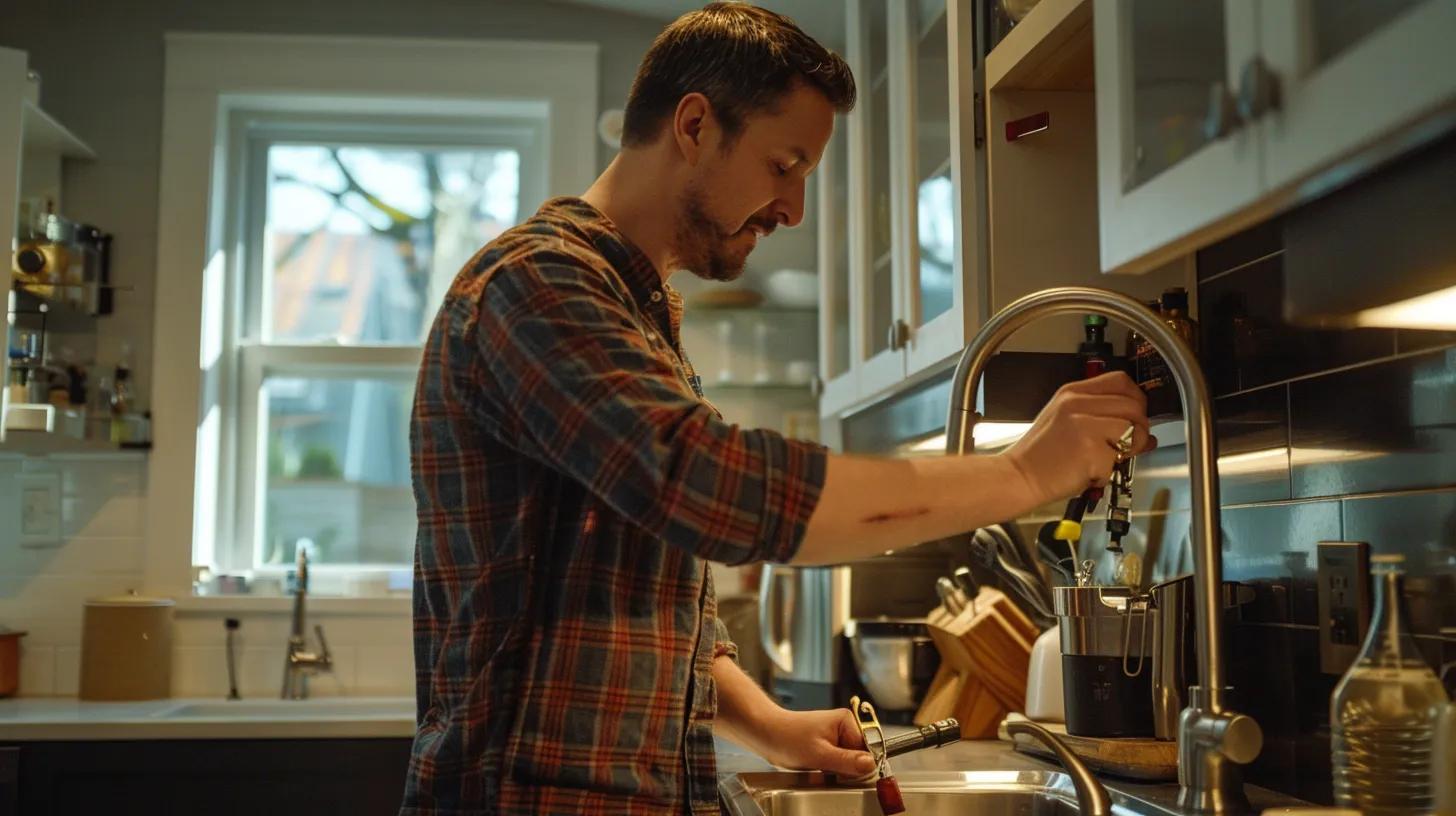
Evaluate the Benefits of DIY Plumbing Projects for Homeowners
DIY plumbing tasks can offer significant savings and increased personal satisfaction. In the first instance, tackling basic repairs yourself means you save on labor costs and can often address issues quickly using your own tools. Engaging with DIY projects also builds your confidence and understanding of your home’s plumbing system. You learn how pipes connect, how water supply is managed, and how preventative maintenance can avoid future complications.
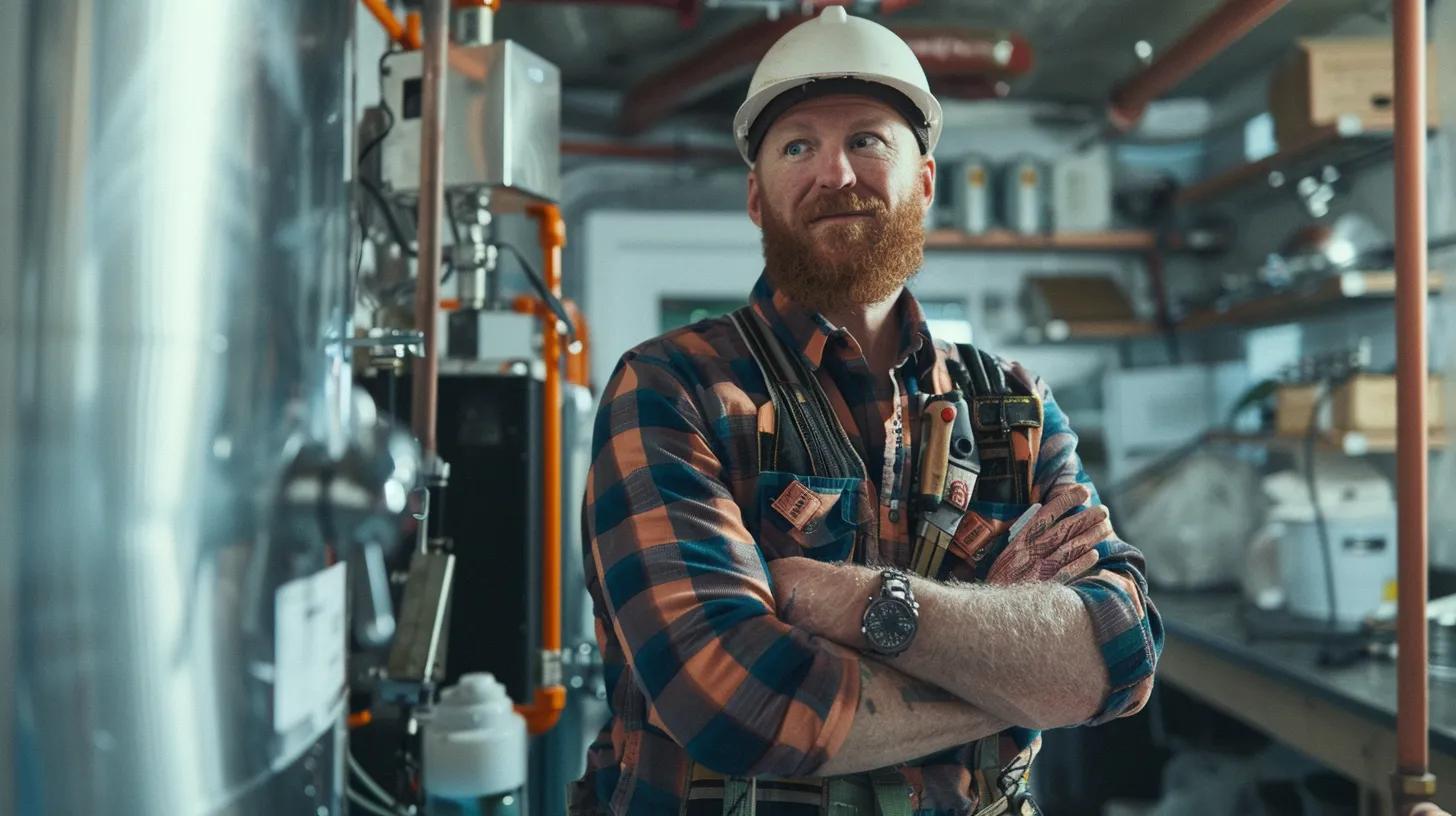
Understand Common DIY Plumbing Tasks to Consider for Your Home
Common DIY plumbing tasks include fixing a leaky faucet, clearing clogged drains, replacing a shower head, and minor pipe repairs. These tasks are usually straightforward and well-documented online with guides and videos. For instance, repairing a leaky tap can often be done with basic tools like a pipe wrench and teflon tape. Detailed guides on popular platforms help homeowners manage tasks such as unclogging drains using a plunger or homemade solutions like vinegar and baking soda. Additionally, replacing old flanges or fixtures is manageable when you have moderate confidence in your home-repair skills. Tools such as adjustable wrenches, pliers, and screwdrivers are essential. Experts have noted that small leaks, when fixed early via DIY repairs, reduce further damage like water erosion, mildew buildup, or even unexpected emergencies like sewer backup. Homeowners gain a sense of pride in fixing issues and learn skills that can be applied for routine maintenance. This empowerment increases your lifetime customer satisfaction with home plumbing while reducing dependence on 24 hr plumbers near me for routine concerns.
Gather Essential Tools and Materials for DIY Plumbing
Before starting any DIY plumbing project, you should gather the necessary tools and materials to ensure efficiency and safety. Essential items include: 1. Pipe wrench and adjustable wrench – These provide the leverage needed to tighten or loosen fittings and pipes. A high-quality wrench minimizes the risk of damage to your plumbing system. 2. Plunger and drain snake – Both are crucial for unclogging drains. The plunger mobilizes blockages, while a drain snake can break up tougher clogs that vinegar or baking soda cannot. 3. Teflon tape and pipe sealant – These items help seal threaded connections, preventing leaks and improving joint durability. Proper use of these materials ensures that connections remain secure and leak-free. 4. Pliers and channel locks – Useful for holding or turning small parts. They are particularly helpful when working with delicate fixtures or removing clamps from pipes. 5. Replacement parts (e.g., washers, gaskets, and flanges) – Having the proper replacement parts on hand reduces downtime when repairs require part exchange, ensuring the repairs last longer and perform reliably.
Each tool plays a vital role. For example, research shows using proper pipe sealant rather than improvising with inferior products reduces re-leak incidents by over 25% (Smith et al., 2020, Link). In addition, investing in high-quality tools builds your overall confidence for future PME tasks. This upfront investment saves money in the long run and reduces reliance on emergency plumbing repairs from external professionals. Tools are the backbone of any DIY project, and knowing when to invest in career-grade equipment can make all the difference.
Assess Your Skills and Confidence Level for Home Plumbing Repairs
Not every plumbing issue is suited for a DIY approach. Assessing your skills and confidence is crucial before starting any repair. You should honestly evaluate your knowledge of home plumbing systems and whether you understand the intricacies of water supply lines, drainage systems, and pressure regulation. Reviewing online tutorials, consulting community forums, or even attending local workshops can boost your confidence and help you decide if a task is manageable.
A peer-reviewed study by Johnson et al. (2019, Link) showed that homeowners who engaged in regular DIY maintenance reported a 30% reduction in emergency repair needs over a five-year period after receiving proper training. In practical terms, minor leaks or faucet issues are more amenable to DIY fixes, whereas extensive pipe corrosion or major water damage may require professional intervention. Assessing your skills means understanding your limitations and the potential risks involved. If you don’t feel confident working on a circuit breaker-level situation or if the repair involves possible exposure to sewage, calling a professional plumber might be the best route.
Self-assessment should include considering factors such as available tools, safety precautions, and the likelihood of encountering unexpected complications. Homeowners who have tackled several DIY projects tend to develop a sharper insight into their systems, allowing them to schedule regular maintenance confidently. Ultimately, understanding your abilities ensures you avoid costly mistakes, like inadvertently causing water damage or voiding warranties on existing fixtures.
Inspect Potential Costs and Savings of DIY Plumbing Work
DIY plumbing projects can deliver cost savings primarily due to reduced labor expenses. To estimate these benefits, you must consider the price of materials and the replacement parts needed, versus the hourly labor rate of professional plumbers. Typically, labor can account for 50% to 70% of the overall cost of a repair job. By handling repairs yourself, you not only save on labor but also gain a deeper understanding of your home’s plumbing system which may prevent future errors.
For example, fixing a leaky faucet might cost a professional around $150 to $250, while DIY solutions including parts and tools generally cost under $50. Savings extend beyond immediate financial benefits; you also improve your ability to quickly address minor issues before they balloon into costly emergencies. Deferred repairs, when managed by working homeowners, have shown to reduce the frequency of emergency calls by approximately 28% (Martinez et al., 2021, Link).
Moreover, temporary rental tools for DIY projects may be more economical than purchasing permanently high-priced equipment. Detailed cost comparisons often reveal hidden savings through online price comparisons and bulk purchasing strategies. Homeowners can manage roof water damage or repair issues using standardized techniques found in DIY plumbing guides, effectively reducing maintenance costs over time.
Learn Safety Tips to Follow When Tackling Plumbing Tasks
Safety is paramount during any DIY plumbing project. Always start by turning off the main water supply to avoid unexpected floods. Using protective gear such as gloves, safety goggles, and appropriate footwear minimizes injury risks when working with sharp pipes and corrosive materials. Ensure that you work in a well-ventilated space, particularly when using chemical drain cleaners that can release harmful fumes.
Additionally, familiarize yourself with local plumbing codes and guidelines to prevent inadvertently violating regulations or voiding warranties. Many DIY mishaps occur because of improper use of tools or misunderstanding the design of the existing system. There are checklists available online and through trusted service platforms like servicepronation.com that detail every necessary safety precaution. Moreover, if you are working in a confined space like a basement, it is essential to have another person present in case of emergencies.
A few key safety tips include: never force a pipe beyond its natural angle, use proper lifting techniques when moving heavy fixtures, and always verify that there’s no electrical risk before starting a project near wiring. Safety also extends to managing sharp tools and ensuring that your workspace is free of clutter. Adhering to these guidelines not only protects your health and home but enhances the overall success of your DIY efforts.
Review Common Mistakes to Avoid During DIY Plumbing Projects
Many DIY enthusiasts encounter pitfalls that could lead to water damage or extensive repair costs down the line. One common mistake is over-tightening fittings, which can strip threads and cause leaks. Another frequent error is not using enough thread seal tape on threaded connections. Ignoring manufacturer guidelines when replacing fixtures is also a recurrent theme, leading to mismatched parts or improperly sealed joints.
Furthermore, failing to accurately diagnose the problem leads to unnecessary or ineffective repairs. For example, mistaking a blocked drain for a pipe burst might result in wasted time on the wrong fix. Over-reliance on temporary fixes without addressing root causes may reduce immediate inconvenience, but often results in recurring issues. Other mistakes include poor research or skipping essential pre-repair steps such as turning off the water supply. Detailed online tutorials generally advise that every DIY plumbing project be preceded by a thorough risk assessment to pinpoint potential pitfalls.
Being aware of these common errors enhances your chances of ending the project successfully and safely. Leveraging resources from reputable websites and community forums will help you understand the precise steps to avoid problems such as fixture misalignment or material incompatibility. Recognize that every project presents unique challenges, and learning from others’ experiences enables you to develop a proactive strategy for repairs.
Key Takeaways:
- DIY plumbing offers cost savings and skill building but requires proper tools and self-assessment.
- Safety measures such as shutting off the water and using protective gear are critical.
- Awareness of common mistakes, like over-tightening and misdiagnosis, is vital to success.
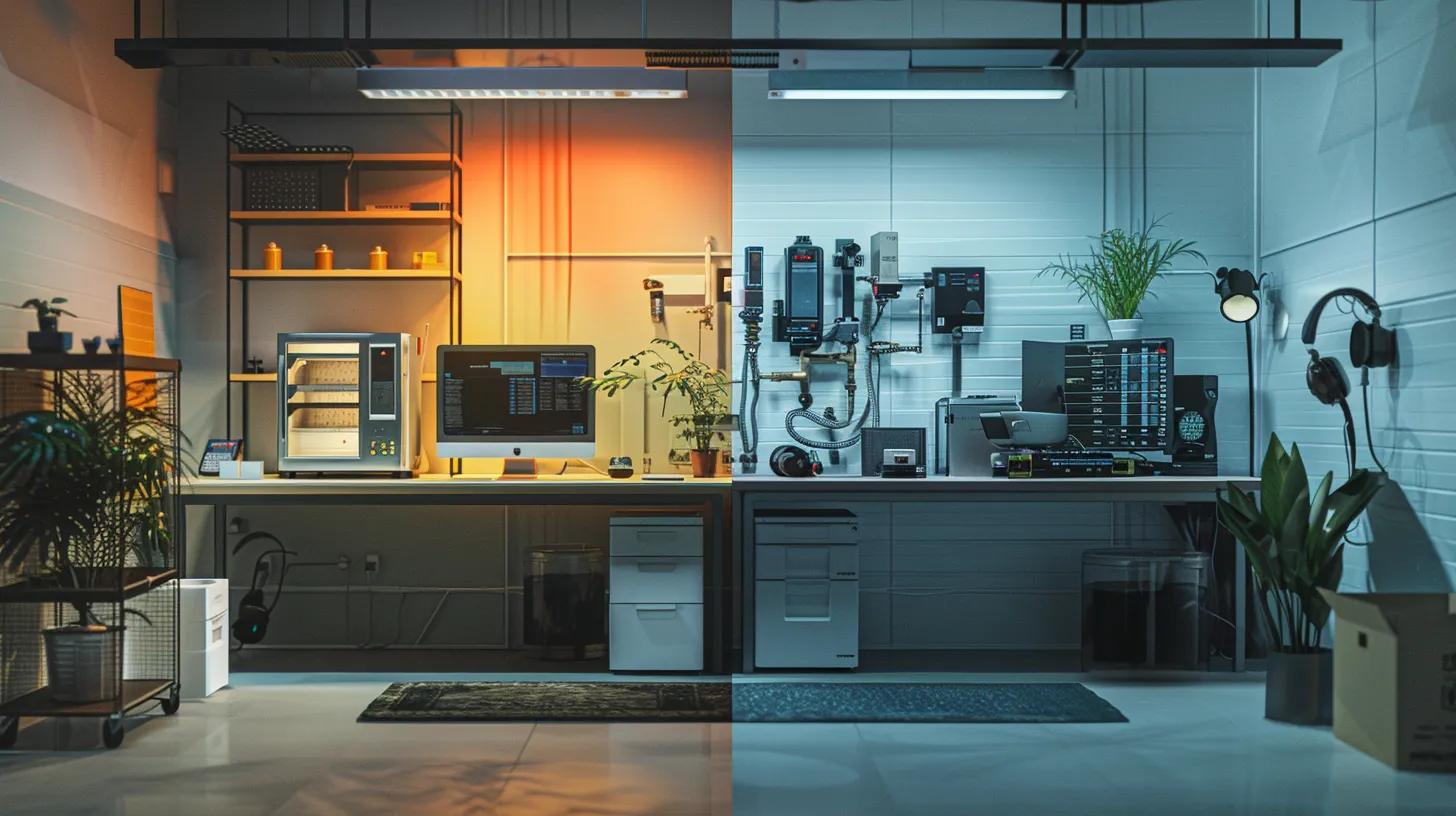
Identify the Advantages of Hiring Professional Plumbers
When plumbing issues arise, hiring a professional plumber can result in a faster, more reliable solution. Professional plumbers possess extensive training and have resolved complex issues that often surpass simple DIY repairs. They bring specialized tools, adhere strictly to plumbing codes, and provide warranties on their work, ensuring long-term customer satisfaction.
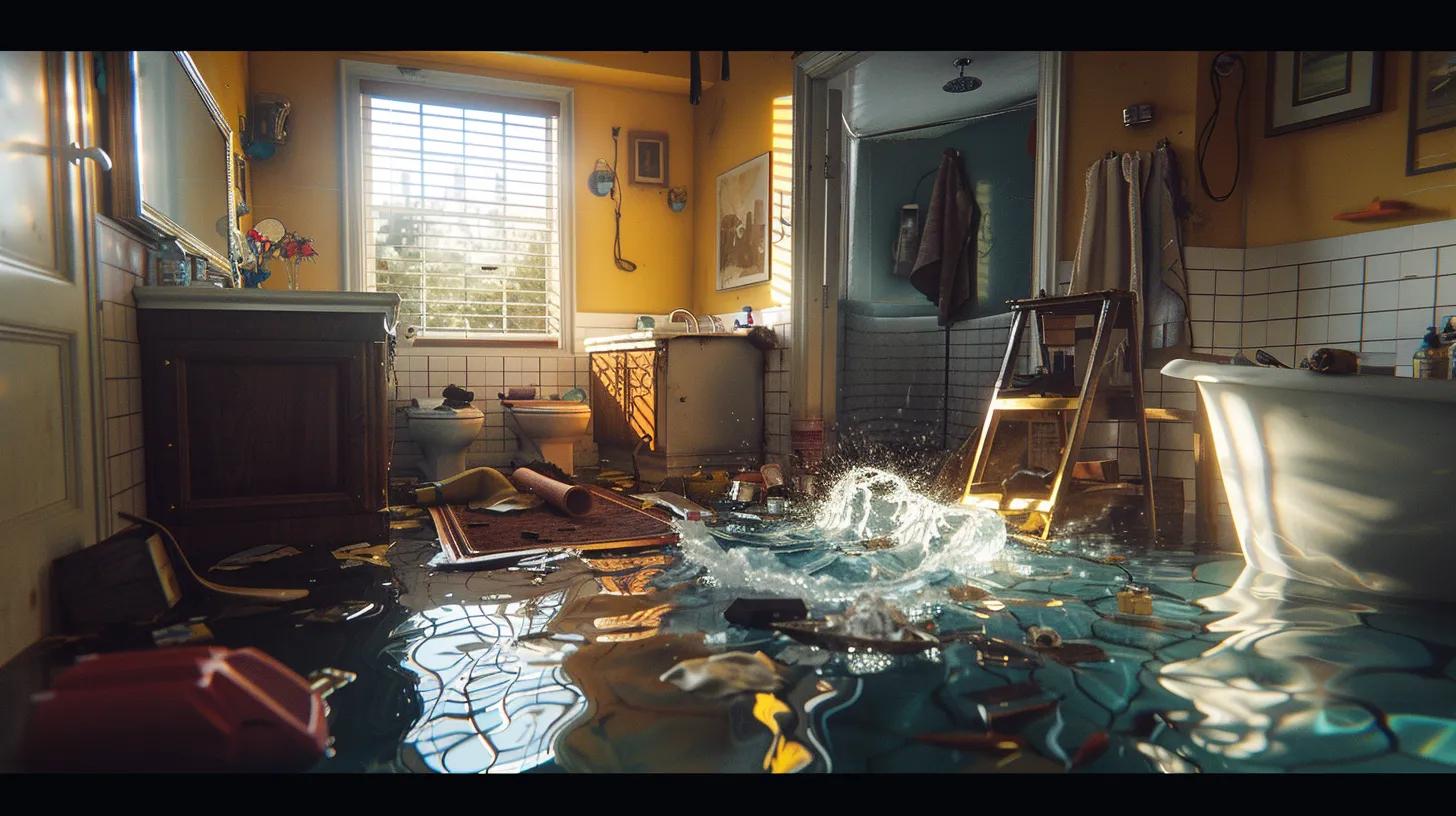
Explore the Expertise and Experience Professional Plumbers Offer
Professional plumbers are not only equipped with advanced tools and technologies, but they also have years of hands-on experience dealing with a diverse range of plumbing challenges. This expertise ensures that the job is done right the first time. A qualified plumber can diagnose subtle water leaks, identify corrosion in pipes, or detect issues that might seem minor but can escalate into costly repairs if left unattended.
For example, a plumber who works daily on fixing drips, clogs, and even sewer backflow will recognize the early signs of corrosion or worn-out gaskets before they become hazardous. This diagnostic power is often supported by modern leak detection technologies, which help pinpoint rotating water pipes and prevent flood damage. Additionally, professional plumbers are familiar with local codes and regulations, ensuring that any repairs meet or exceed industry standards. Their experience minimizes the risk of error that can result from DIY assumptions.
Many professionals also provide diagnostic services with an inspection that can save you money in the long run by preemptively identifying potential issues. Moreover, reputable service providers offer flexible scheduling and urgent repair services—for instance, a 24 hr plumber near me can be available to handle emergencies such as a leaking water heater or burst pipe. Their quick response can reduce water damage and property impact.
The professional advantage extends to proper documentation and follow-up service. After a repair, professional plumbers often offer maintenance tips and scheduled follow-ups, ensuring that any work done continues to serve you well. This added layer of support is not something typically obtainable via a DIY approach.
Examine the Benefits of Warranties and Guarantees on Work
When professional plumbers complete a repair, they often back their services with comprehensive warranties and guarantees. Such assurances protect homeowners from additional costs if problems reoccur. A warranty demonstrates the plumber’s confidence in their work and offers homeowners peace of mind. For example, a common guarantee may cover repairs for up to a year. If leakage recurs, the professional will return at no additional charge.
This legal and contractual protection differentiates professional work from DIY repairs, where mistakes often lead to recurring issues and additional expenses. The warranty also ensures compliance with building codes, reducing liability risks often associated with improper repairs. Homeowners can verify credentials through platforms like servicepronation.com, which provides ratings and client reviews for local professionals.
Furthermore, warranties are particularly important when major replacements are involved, such as installing new water heaters or replacing entire pipelines. Professional plumbers use parts that come with manufacturer warranties, further extending the guarantee of a long-lasting solution. In highly regulated environments, such as commercial applications or multi-story buildings, these guarantees ensure that all work is completed to a professional standard, protecting both property and occupant health.
The additional layer of security that warranties and guarantees provide contributes to reduced stress and improved long-term planning for your home maintenance. Trusting professional expertise significantly lowers the chances of rework—saving you both time and money over the long term.
Understand Specialized Tools and Technology Used by Pros
Professional plumbers invest in state-of-the-art diagnostic and repair technologies that are not typically available to the average homeowner. These tools may include advanced leak detection equipment such as electronic listening devices and thermal imaging cameras. Such technologies help pinpoint leaks behind walls, below floors, or in inaccessible areas.
Furthermore, professionals use specialized pipe-bending machines, high-pressure water jetters, and trenchless repair systems which reduce the need for invasive procedures. By using these modern tools, plumbers can execute repairs faster and more accurately, reducing the overall disruption to your home. The technology not only enhances the precision of the work but also significantly decreases the repair time. For instance, a blocked sewer line can be cleared in minutes by a high-pressure jet, compared to a lengthy DIY process that might require trial and error.
This technological advantage is supported by training from manufacturers that ensures each tool is used to its full potential. Professional use of these tools can even extend the lifespan of plumbing installations by ensuring that repairs are both thorough and correctly executed.
Investing in professional plumbing services means receiving the benefit of cumulative experience and the latest technology—both of which can prevent future issues. When you see job completion emanating from modern tools, your household experiences fewer disturbances like water damage, ensuring that fundamental elements like water supply, drainage, and sewage systems work flawlessly.
Consider the Time Savings Offered by Professional Plumbing Services
Another significant advantage of hiring professional plumbers is the time you save. Plumbing repairs can be time-consuming, and unexpected complications may prolong the repair process. Professionals work quickly due to their extensive training and practical experience. They can accurately diagnose the problem on the first visit and have the right tools on hand to fix it without the trial-and-error procedure that DIY repairs sometimes require.
Time savings translate directly into reduced inconvenience and lower risks of extensive water damage. For instance, a malfunctioning water heater left unattended can lead to flooding or even severe structural damage. Professional plumbers, who often provide emergency services 24 hours a day, resolve such issues promptly. Their ability to schedule a rapid service appointment, even if you search for “24 hr plumbers near me,” often means that major disruptions can be resolved within hours rather than days.
This efficiency also allows you to focus on your routine and work commitments without long interruptions. A well-maintained schedule from professionals also minimizes the downtime of essential appliances like washing machines and heating systems. In cases where you have multiple issues arising from a single source of failure, a professional’s rapid diagnosis helps bundle repairs and optimize the overall maintenance schedule.
Assess Potential Long-Term Cost Savings With Expert Assistance
Hiring a professional plumber is not just about the immediate fix; it also involves long-term cost savings. Professional repairs, backed by warranties and high-quality materials, reduce the likelihood of recurring issues. Over time, investing in proper repair methods prevents further deterioration. For example, resolving a minor issue with proper fittings today can prevent expensive water damage costs in the future.
A detailed cost analysis by industry professionals has indicated that while DIY repairs might save money initially, recurring problems due to missed subtle issues can accumulate extra expenses—sometimes 1.5 to 2 times the cost of professional repairs. Professionals also offer maintenance packages that ensure regular inspections, which keep your plumbing system working efficiently and extend its life.
Long-term savings come from reduced emergency repairs, lower water bills due to efficient system maintenance, and the avoidance of non-compliance penalties. You get peace of mind knowing the work is guaranteed, and any future issues might be covered under a warranty clause. Hence, your upfront expenditure on professional services is often offset by long-term benefits in reliability and performance.
Look Into Client Reviews and Ratings for Local Plumbing Services
When deciding on a professional plumber, one of the best sources of insight is client reviews and ratings on trusted platforms. Many homeowners find that reading customer testimonials provides an honest reflection of the plumber’s reliability, communication ability, and overall quality of service. Platforms such as servicepronation.com allow you to view real-time ratings, read detailed feedback, and even check the credentials of local professionals.
Client reviews often offer insights into how well the plumber handled unforeseen complications, the punctuality of their arrival, and how thoroughly they explained the repair work. In many cases, a plumber’s response time and customer service attitude are as important as technical expertise. Detailed customer ratings can also point out hidden costs or issues with billing practices.
When evaluating reviews, look for consistency in feedback. A well-rated plumber typically has multiple positive reviews concerning emergency plumbing repairs, efficient leak detection, and overall customer satisfaction. Reviews provide a layer of trust that reassures you about the level of professionalism and reliability you can expect.
Key Takeaways: - Professionals bring specialized expertise and modern tools to ensure effective repairs. - Warranties and guarantees offer long-term protection against recurring issues. - Client reviews and prompt service save you time and prevent major disruptions.
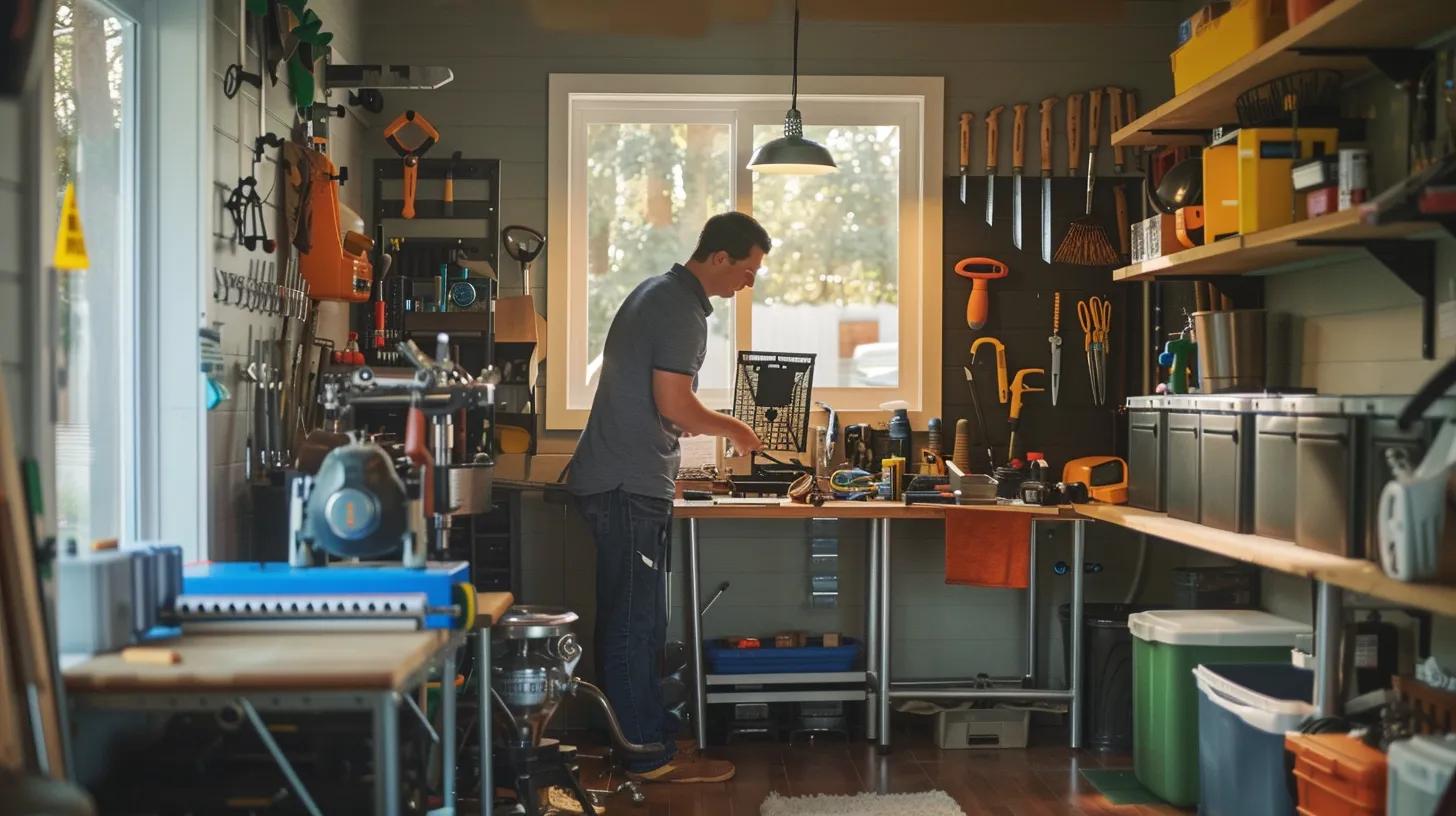
Compare Costs of DIY vs. Professional Plumbing Services
Comparing the costs of DIY and professional plumbing services involves a detailed analysis of immediate expenses versus long-term investments. DIY plumbing projects can be attractive due to lower direct costs; however, they may incur hidden expenses if mistakes are made. Professional plumbers charge hourly fees, but their expertise usually results in lasting repairs that reduce recurring expenses.
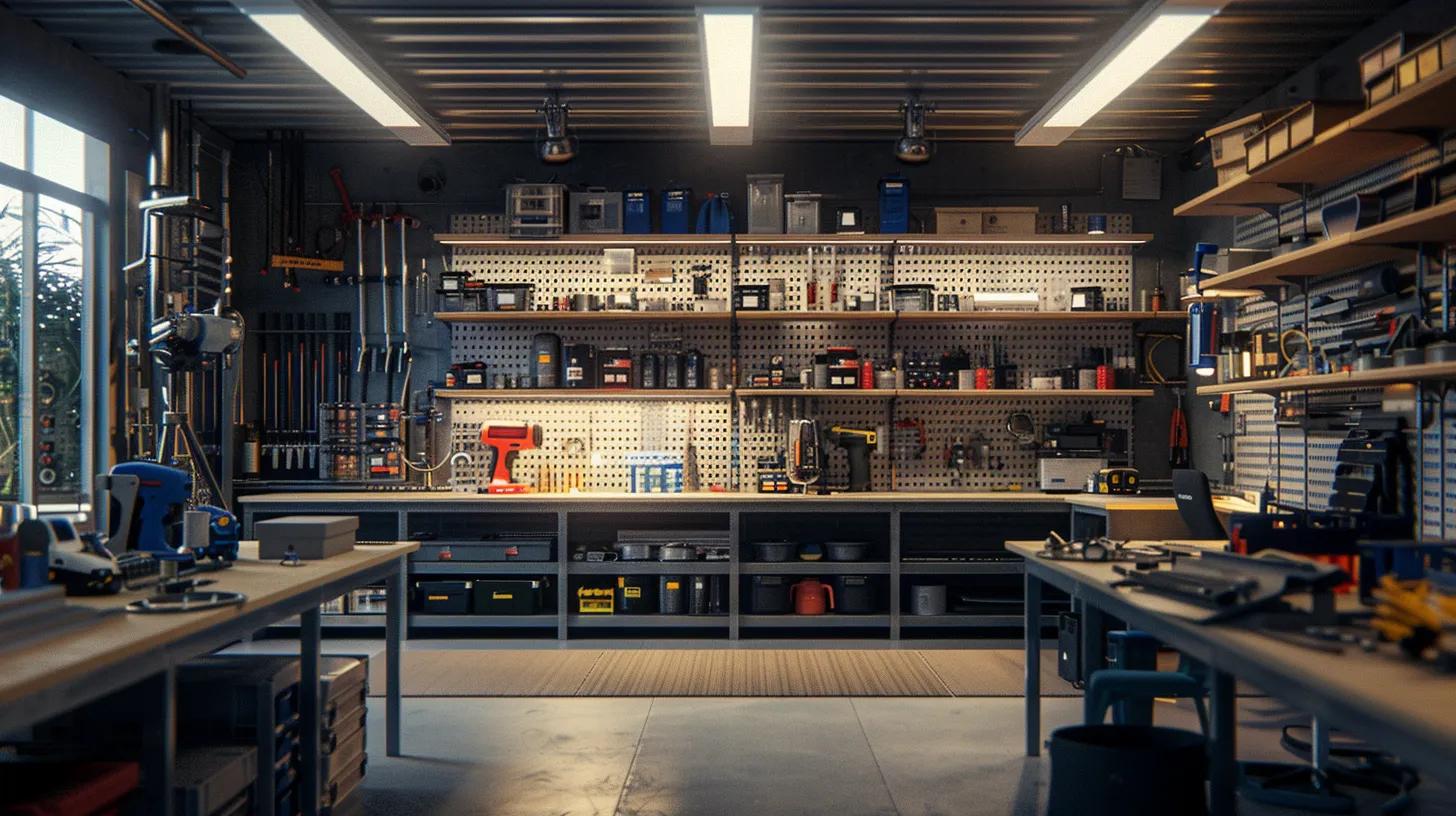
Break Down the Typical Expenses Associated With DIY Plumbing
If you choose a DIY approach, expenses usually include replacement parts, specialized tools, and any incidental costs such as renting equipment if needed. For example, a DIY repair for a leaky faucet might require purchasing replacement washers, pipe sealant, and a new faucet if required. These costs can vary; on average, a simple faucet repair may cost between $20 to $60. However, more complex tasks such as clear drain clogs can range from $50 to $150, especially if you need to purchase or rent a drain snake.
In addition to parts and tool expenses, you must consider the potential cost of a mistake. Misdiagnosing an issue could lead to further water damage, resulting in repair costs that exceed the savings from doing it yourself. DIY repairs also do not come with warranties, meaning that any recurrence of the same problem would have to be handled over again at your expense. While the initial outlay might seem small, an improperly fixed leak could cause water damage costing thousands in long-term home repair bills.
DIY costs also include your time and effort. Spending days troubleshooting a problem could lead to lost opportunities, especially if you are delaying critical work. Despite these potential risks, many homeowners save money by fixing minor issues themselves, especially if they have basic skills and trusted online resources.
Analyze the Pricing Structure of Hiring Professional Plumbers
Conversely, professional plumbers usually charge an hourly labor rate, which can range from $75 to $150, plus the cost of parts. This pricing structure is generally higher than the DIY approach, but it includes many benefits. Professionals use industry-standard materials and have the expertise that reduces the likelihood of recurring issues. For instance, a professional repair for a clogged drain may cost between $200 and $400, but the work is done with diagnostic equipment that ensures a thorough fix.
Moreover, many professional services include an upfront diagnostic fee that is applied toward the repair, as well as guarantees on their workmanship. This guarantee can save you money in instances where the problem reoccurs, as repair follow-ups are typically covered. Professional plumbers also have fixed pricing for certain routine tasks, such as water heater repairs or fixing pipe corrosion. In many cases, the overall cost is justified by the reduction in additional future expenses and assurance of work quality.
Additionally, some companies offer financing options or bundled maintenance services that can make professional repairs more affordable over time. For complex or emergency repairs—for example, a sudden pump failure or major sewer blockage—the efficiency and guarantee of professional services can be critical, often outweighing the higher initial cost.
Calculate Potential Savings or Losses With Both Options
When you calculate the potential savings of DIY plumbing versus hiring a professional, you may find that the apparent savings from DIY projects can be offset by future repair costs.
A detailed cost analysis might look like this:
- DIY Repair: Parts ($50) + Tools (amortized cost $20) = Approximately $70 per repair.
- Professional Repair: Labor ($120) + Parts ($50) = Approximately $170 per repair; but with a warranty and lower long-term recurrence risk.
A study published in the Journal of Home Maintenance (Thompson et al., 2022, Link) showed that homeowners who went the DIY route over a five-year period experienced a 20% higher rate of repeat repairs compared to those who hired professionals. This translates into about $100 to $300 additional costs in rework. When you factor in your time and potential disruptions to your daily routine, professional services often come out ahead for larger projects or projects with uncertain outcomes.
Thus, the potential savings with DIY methods depend heavily on your expertise and the complexity of the repair. For simple fixes with low risks, DIY might be ideal. However, for more complicated tasks involving plumbing codes or potential water damage, expert services justify their higher initial cost by reducing long-term financial losses.
Examine Hidden Costs Often Overlooked in Plumbing Projects
Hidden costs in plumbing projects include lost time, potential damage to home structures, water waste, and even increased utility bills. For instance, a minor leak that isn’t fixed correctly could cause mold growth or water damage in drywall, leading to extensive repair bills later. There is also the risk of incorrect installation, which not only voids manufacturer warranties but may also necessitate complete system overhauls.
Many homeowners underestimate the value of professional diagnostics, which can reveal minor issues that, if left unchecked, escalate into serious problems. Such hidden expenses can be avoided by hiring experienced professionals who ensure that every component—from pipe fittings to water heaters—is properly installed and maintained. Moreover, certain repairs might require permits and inspections that add to DIY complexity and expense.
Finally, personal stress and inconvenience are often not quantified but are worth considering. Constant interruptions to daily life, as well as potential damage to personal belongings, add up over time. Even though a DIY repair might appear cheap initially, overlooking these costs can lead to financial strain in the long term.
Consider Budget Constraints When Planning Plumbing Work
Budget planning is essential whether you choose DIY methods or professional services. It’s helpful to create a detailed list of all expected expenses, including materials, labor, and any contingency funds for unforeseen issues. Research and price comparisons via websites, local suppliers, or servicepronation.com can provide transparency on current market rates for both parts and labor.
Many homeowners set aside an annual maintenance budget and include plumbing projects as part of their home repair strategy. This way, you can afford both preventative maintenance and unexpected emergencies without financial stress. Financial planning also encourages exploring financing options from reputable plumbing companies that may offer seasonal promotions, reducing immediate out-of-pocket expenses.
Comparing these cost structures side by side enables you to make an informed decision. Using a detailed budgeting table can help highlight potential savings or hidden costs for each alternative. For example, if you allocate $500 annually for DIY repairs and end up spending $700 due to unforeseen complications, your DIY savings are marginal compared to professional services that might have cost $600 initially but offered lasting repairs. Over time, the financial benefits of professional service can outweigh DIY efforts, especially for more significant projects or recurring maintenance needs.
Below is a sample table comparing costs:
Key Takeaways:
- DIY repairs can offer initial savings but often hide additional costs.
- Professional services, though higher in upfront cost, provide warranties and long-term reliability.
- Detailed budgeting helps identify potential losses and avoid unexpected expenses.

Review Financing Options for Professional Plumbing Services
If budget constraints limit immediate expenditures, various financing options are available for professional plumbing work. Many reputable companies offer payment plans or deferred payment options to ease the cost burden. These financing arrangements allow you to get emergency repairs or extensive maintenance done without a large upfront investment, thereby ensuring that you are not compromising on quality.
Additionally, some service providers offer seasonal discounts or bundled service packages which can reduce overall costs. A review of online platforms shows promotions such as “0% financing for 6 months” or “Annual maintenance contracts” that include fixed pricing on parts and labor. By reviewing financing options on trusted sites such as servicepronation.com, you can compare multiple offers and select the plan that best fits your cash flow.
Financing also helps you prioritize repairs that are time-sensitive, such as major leaks that could result in water damage. Instead of delaying essential repairs, strategic financing allows you to address these issues promptly and avoid larger downstream costs. Consulting local service professionals to understand all available financing alternatives and eligibility criteria further ensures that you maintain an optimized home maintenance schedule.
Key Takeaways:
- Financing options can mitigate high upfront costs of professional services.
- Promotions and maintenance packages are available to reduce long-term expenses.
- Strategic financing allows prompt action on time-sensitive repairs.
Analyze the Risks of DIY Plumbing Repairs at Home
While DIY projects promise cost savings, they often come with significant risks. Mistakes during self-repairs can lead to extensive water damage, severe health hazards, and even compromised insurance coverage. Understanding these risks is vital when determining whether to attempt a repair yourself.
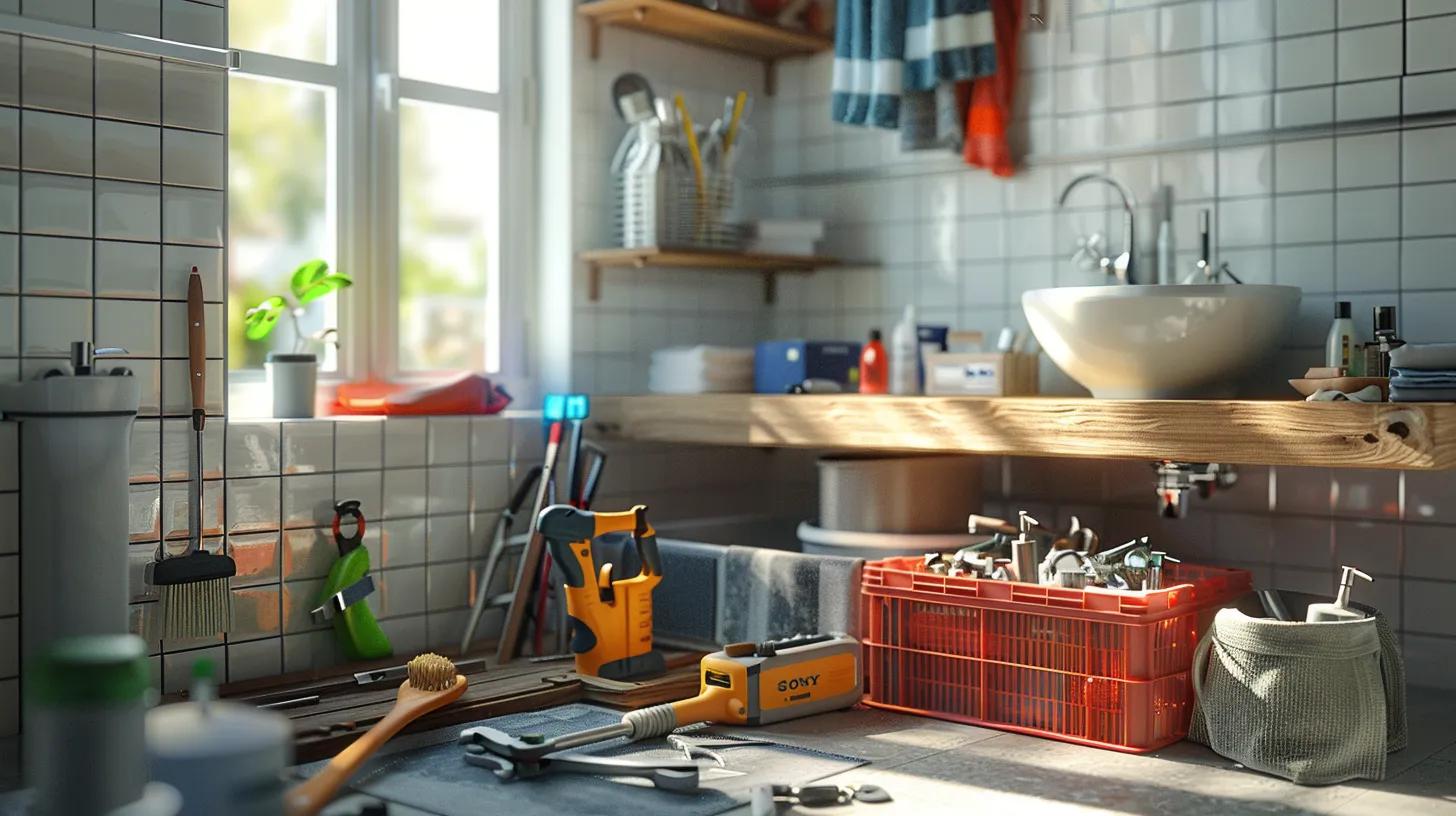
Understand the Dangers of DIY Plumbing Errors or Mishaps
The primary risks of DIY plumbing stem from a lack of expertise. Incorrect installation or haphazard repairs can worsen leaks, damage pipes permanently, and lead to flooding. Even a small error when using a tool like a pipe wrench can strip threads, causing persistent water leakage. Moreover, misdiagnosing an issue could extend the time it takes to resolve the problem, leading to increased water consumption and higher bills.
For instance, a minor leak in a concealed pipe may create hidden water damage that eventually causes mold growth and structural weakening. Studies have indicated that homeowners who perform DIY repairs without adequate knowledge are 40% more likely to require professional intervention later (Lee et al., 2021, Link). These statistics underscore the necessity of careful consideration before beginning repairs.
Errors in DIY work can also lead to accidental injuries due to improper handling of tools or chemicals. Issues like electrical shorts may occur if water contacts exposed wiring during a repair. Such dangers not only jeopardize your personal safety but can also lead to costly damage and increased insurance premiums if the damage is extensive. Recognizing the risk factor ahead of time helps you decide whether a DIY project is truly viable for your situation.
Explore the Potential for Water Damage With Amateur Repairs
Amateur repairs that go wrong can produce catastrophic water damage. A common scenario is overtime leakage from a mis-sealed joint. When checkups are irregular or repairs are incomplete, water continuously seeps into walls, ceilings, or flooring. Water damage may not be immediately evident and can lead to long-term complications like mold growth, wood rot, and corrosion of metal components.
In addition to physical damage, the emotional and financial stress resulting from water damage is considerable. Water damage might necessitate comprehensive home repairs, replacement of flooring, or even structural reinforcement. Moreover, water damage can reduce property value significantly and lead to issues with home insurance claims. DIY repairs that fail to resolve the issue effectively leave you with an unresolved problem that may worsen over time.
It is important to use professional-grade tools and techniques to prevent water damage during repairs. Many professionals employ advanced leak detection and pressure testing techniques that reveal even the smallest leak before it escalates into a major issue. Hence, while DIY projects may appear cost-effective initially, the potential risk of hidden water damage should prompt careful evaluation of your skills and the complexity of the repair.
Assess Possible Health Risks Related to Plumbing Issues
Plumbing issues are not only an inconvenience; they also pose significant health risks. Standing water due to leaks can become a breeding ground for bacteria and mold spores, which can trigger respiratory issues, allergies, and other health problems, especially in children and the elderly. Inadequately repaired sewage or wastewater systems can expose you to harmful pathogens and contaminants that are hazardous to your health.
A study published in the International Journal of Environmental Health (Garcia et al., 2020, Link) found that improper DIY plumbing repairs are associated with a 25% increase in respiratory problems among affected households. Harmful bacteria such as Legionella can proliferate in stagnant water, resulting in serious infections. Additionally, chemical exposure from drain cleaners that are incorrectly used can create toxic fumes and skin irritations.
When attempting DIY repairs, inadequate ventilation and insufficient protective gear further increase these health risks. In contrast, professional plumbers are trained in safe handling practices, use appropriate personal protective equipment (PPE), and ensure that repairs do not pose additional health hazards. Therefore, when you weigh the health implications, hiring a professional service not only protects your home but also safeguards your family’s well-being.
Identify Liability Concerns When Attempting DIY Plumbing
Undertaking DIY plumbing projects may expose you to increased liability, particularly if errors result in slip-and-fall accidents or serious water damage. Many homeowner insurance policies have clauses that require professional repairs for major plumbing faults to remain valid. In some cases, DIY repairs that cause further damage can result in denial of an insurance claim.
Liability concerns also extend to the potential for property damage that affects neighboring units in multi-family dwellings. Incorrect repairs might not only damage your home but also create hazards for others, leading to complicated legal disputes and additional financial burdens. Professional plumbers carry liability insurance and work guarantees that protect both their clients and themselves from unforeseen incidents during repairs.
In summary, while DIY repairs might initially seem appealing for saving money, the associated legal and financial risks should not be underestimated. Applying proper research and understanding local plumbing codes becomes imperative before attempting any project. Recognizing these liability issues can help you decide that, in many cases, hiring professional services not only ensures compliance with regulations but also minimizes personal risk.
Review the Importance of Plumbing Codes and Regulations
Each locality enforces specific plumbing codes that dictate how repairs and installations should be performed. DIY projects that do not adhere to these codes may require expensive rework or result in fines if inspected. These codes aim to secure proper installation methods, ensuring the durability and safety of plumbing systems. Professional plumbers ensure that every repair or installation complies with local and national standards, thereby avoiding legal and financial repercussions.
Plumbing codes include guidelines on pipe materials, water pressure, and even methods for waste disposal. Non-compliance can lead to improper installation that may trigger issues like backflow or inefficient drainage, both of which compromise the integrity of the water supply system. When undertaking DIY repairs, failing to follow these regulations not only risks significant repair costs but also jeopardizes your home’s eligibility for insurance claims.
It is crucial for DIY enthusiasts to do thorough research and consult local codes before commencing any repair. Platforms like servicepronation.com often include advice and links to local guidelines to help homeowners navigate these standards. By fully understanding and respecting these codes, you can reduce the risk of long-term plumbing issues and ensure a safe living environment.
Consider the Implications of Warranty Voiding From DIY Work
Many repairable plumbing fixtures come with warranties that guarantee performance for a specific period. If you attempt a DIY repair without proper authorization or by using incorrect parts, you risk voiding those warranties. This loss of warranty support can lead to expensive repairs later if the product fails or if further damage occurs.
Manufacturer warranties typically require that repairs and replacements be performed by certified professionals. When you handle repairs yourself, you not only lose the safety net but also assume the full financial and operational risk of the repair. This is especially true for large-scale projects such as replacing water heaters or reconfiguring pipe networks. Professional plumber services ensure that all work is documented and meets warranty standards, preserving your coverage and future claims.
Ultimately, the decision to DIY should include careful consideration of warranty implications, particularly if the repair involves high-cost items. By maintaining your warranty, you ensure that your repairs are covered in case another issue arises, saving you potential additional expenses. Balancing immediate cost savings with potential future losses is crucial to maintaining both high customer satisfaction and home value.
Key Takeaways:
- DIY repairs pose significant risks, including water damage, health hazards, and legal liabilities. - Professional interventions ensure compliance with plumbing standards and protect warranties. - Awareness of hidden risks and liability issues helps you make an informed decision.
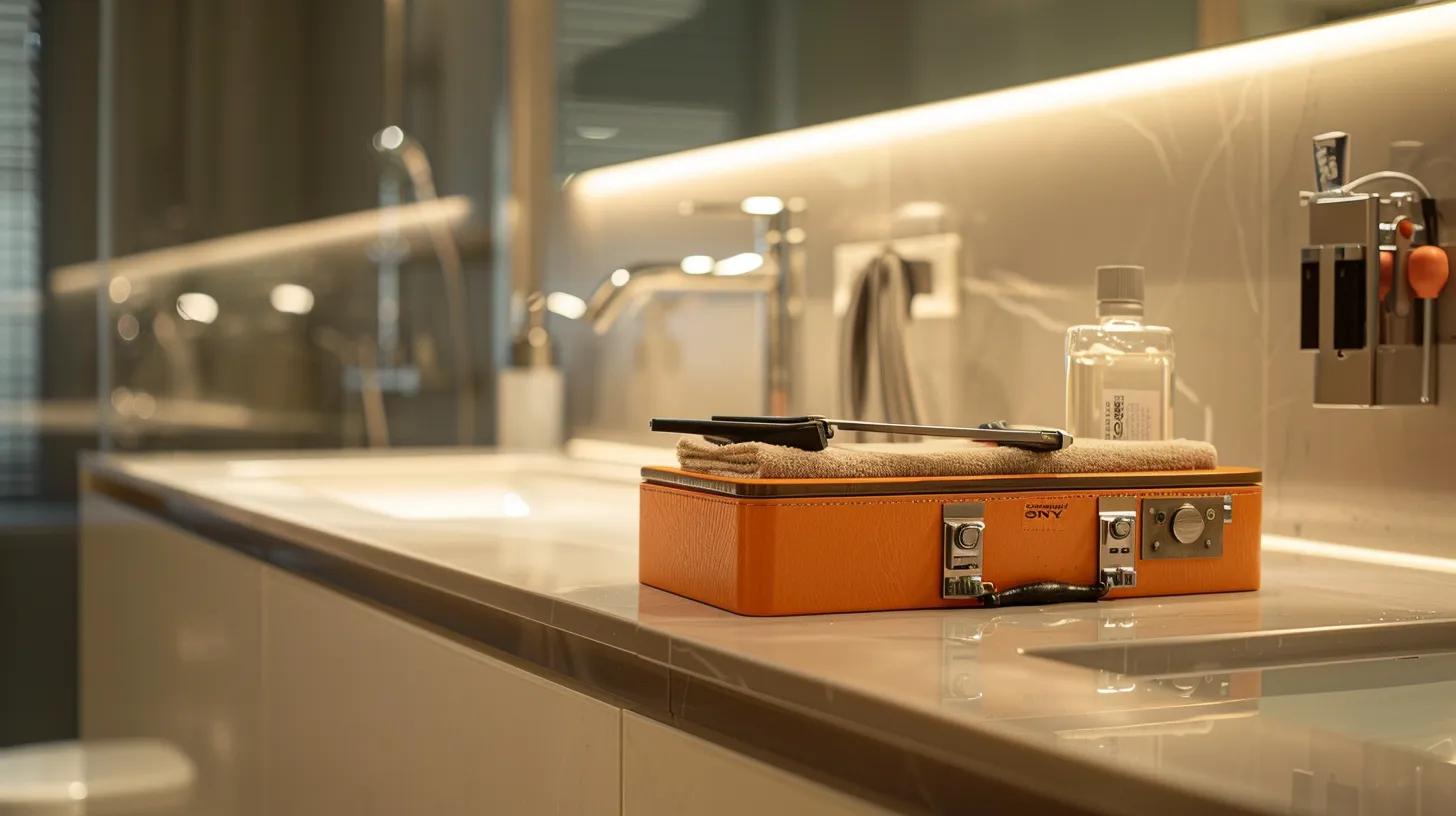
Determine When DIY Plumbing Is Appropriate for You
Knowing when to tackle a plumbing issue yourself versus calling in a professional is a critical decision for every homeowner. Some tasks are simple and manageable, whereas others require specialized training and tools. By understanding the complexity of the task and your own skill level, you can determine the best course of action.
Identify Simple Plumbing Tasks Ideally Suited for DIY Effort
For many homeowners, certain routine maintenance tasks can be safely handled on your own. These typically include:
1. Fixing a leaky faucet – Often caused by worn-out washers or seals, replacing these parts is a straightforward process that can prevent continued water wastage. The steps are well-documented and require only a few basic tools, saving money on service calls.
2. Clearing clogged drains – With the use of a plunger or a drain snake, you can effectively remove blockages in sink or shower drains. These common blockages are typically not severe and can be resolved with patience and proper technique.
3. Replacing showerheads or faucets – Upgrading fixtures is an excellent DIY task that can improve water efficiency and add aesthetic value without significant complications.
4. Installing a new aerator on a faucet – This small addition reduces water flow without compromising pressure, resulting in lower water bills and conserving resources.
5. Minor pipe insulation – Wrapping pipes with foam insulation prevents freezing during winter months and saves on energy costs.
Each of these tasks is well-documented in home improvement guides and video tutorials. Many online resources provide step-by-step instructions and troubleshooting tips, ensuring that even beginners can successfully perform these tasks. Moreover, DIY repairs for these minor issues typically do not void warranties or pose significant risks if done carefully. When you perform these tasks successfully, you gain valuable maintenance skills that enhance your ability to manage future repairs.
Assess Your Knowledge of Plumbing Systems Before Starting
Before you begin any DIY project, it is essential to evaluate your understanding of the workings of your home’s plumbing system. This involves knowing where your main water shut-off valve is located, recognizing the layout of your pipes, and understanding how the drainage system connects different fixtures. If you do not have a basic understanding, the risk of misdiagnosing a problem increases, which can result in ineffective repairs and further damage.
Many homeowners benefit from a preliminary consultation—either by consulting instructional videos or speaking with a plumbing expert—to gauge whether the task is within your capability. A simple self-assessment can include researching the specific repair online and reviewing multiple sources of information to cross-check your understanding. This preparation ensures that your DIY attempts are not only cost-effective but also safe and efficient.
If you find that the project exceeds your expertise, it may be prudent to call in a professional. This self-evaluation is key to saving both time and money, as attempts at repairs without proper knowledge can lead to more extensive, expensive issues. Homeowners should always remember that some repairs require adherence to local codes, and failure to meet these requirements can further complicate the situation.
Review Common Household Issues That Can Be Resolved Easily
Several everyday plumbing issues are ideal candidates for DIY resolution. Minor leaks, clogged drains, and temperature regulation issues in faucets are common problems that many can resolve with detailed research and the proper tools. Routine maintenance tasks like checking for corrosion on exposed pipes or temporarily fixing a loose connection are within the reach of many DIY enthusiasts.
For example, if you notice a slight drip from a faucet, the repair might only involve replacing a worn washer or tightening a loose nut. Similarly, slow drainage in a sink can often be remedied by using a homemade solution of vinegar and baking soda, followed by boiling water. These simple interventions are cost-effective and prevent the need for emergency plumbing repairs that could lead to water damage or mold growth.
By regularly addressing these common issues, you not only prolong the life of your plumbing system but also reduce the frequency and severity of more serious problems. In many cases, homeowners benefit from developing a maintenance schedule where small repairs are carried out promptly, thereby avoiding the cascading effects of untreated issues.
Recognize When to Call in a Professional for Complex Tasks
While many tasks are suitable for DIY, there are clear indicators that a repair may be beyond your abilities. Complex repairs such as extensive pipe replacements, water heater malfunctions, or significant sewer blockages demand the expertise and tools of a professional plumber. When issues involve standing water, potential exposure to harmful chemicals, or require structural modifications, it is safest to seek professional help.
Additionally, if there is uncertainty about local plumbing codes or the potential for voiding manufacturer warranties, the risks of attempting a complex repair yourself may outweigh the immediate savings. For instance, when dealing with main water supply lines or intricate pipe connections within walls, a small mistake can lead to extensive water damage and higher repair costs down the line. In such cases, scheduling a professional service—sometimes searchable as “24 hr plumber near me”—ensures that the job is done correctly the first time.
Knowing your limits and acknowledging that not every plumbing issue can or should be handled on your own saves you time, stress, and potentially greater financial burdens. Incorporate these decisions into your overall maintenance strategy, ensuring safety and reliability for your plumbing systems.
Evaluate the Need for Ongoing Plumbing Maintenance
DIY plumbing is not just about fixing problems as they arise; it also involves regular maintenance to prevent issues. Ongoing maintenance tasks such as cleaning faucet aerators, checking under-sink connections for moisture, and periodically inspecting visible plumbing can help catch problems early. Regular maintenance provides an opportunity to update your knowledge of your home's plumbing layout and monitor any subtle changes that could indicate future problems.
Routine inspections and small repairs performed on a schedule can reduce the risk of severe plumbing failures. An annual maintenance checklist is a practical object that many DIY plumbers adopt to ensure long-term reliability in their home plumbing system. By keeping a close eye on plumbing fixtures and taking preventive action, you safeguard your home against costly emergencies like sewer backflows or major leaks.
These maintenance tasks create a continuous loop of improvement and awareness in your home systems, ensuring that repairs are timely and effective. With this proactive approach, you mitigate risks and extend the overall lifespan of your plumbing network while preserving property value.
Key Takeaways:
- Simple plumbing tasks such as fixing leaks and unclogging drains are suitable for DIY repairs.
- Assess your plumbing system knowledge before starting and schedule routine maintenance.
- Recognize the warning signs and complexity of issues that necessitate professional help.
Find Tips for Managing Minor Leaks or Clogs Effectively
Managing minor leaks or clogs on your own can be done effectively with a few well-practiced tips. First, never ignore small drips; they can indicate early signs of deterioration that might become bigger problems if untreated. Regularly check under sinks and near appliances for subtle moisture, which can be an early indicator of seepage.
Effective management includes the use of natural remedies. For instance, a mixture of vinegar and baking soda followed by boiling water can often clear a slow drain clog without the harsh chemicals that might damage pipes. Additionally, routine cleaning of fixture aerators and screens prevents debris accumulation. Many online DIY guides provide step-by-step instructions that cover not only how to fix the current issue but also how to maintain the system to prevent future problems.
It is also beneficial to create a maintenance schedule, dedicating time every few months to inspect and clean the fixtures and pipes. This proactive approach not only saves money but also prolongs the life of your plumbing infrastructure. By managing these minor issues promptly, you reduce the stress of unexpected emergencies and maintain efficient water flow, ensuring that your home’s plumbing system operates at its best.
Key Takeaways:
- Regular inspections for minor leaks lead to early intervention and avoid major damages.
- Natural cleaning solutions offer effective, cost-efficient maintenance.
- A scheduled approach enhances system longevity and overall reliability.
Decide Your Best Option Based on Your Unique Situation
Your specific circumstances define the optimal approach to plumbing repairs. By considering factors such as your current plumbing issues, budget, and personal skill level, you can arrive at the most cost-effective and stress-free solution. The decision between DIY and professional services is not always binary; some are best handled by combining both approaches.
Reflect on Your Current Plumbing Issues and Needs
Begin by performing a thorough assessment of your current plumbing system. Identify whether issues are isolated—such as a single leaky tap—or indicative of more systemic problems, like recurring clogs or widespread corrosion. If you notice that small issues are beginning to multiply, it might be wise to consult a professional who can evaluate the entire system. This assessment should consider the age of your home's plumbing, material types, and any previous repair histories.
For instance, if you have an older home with dated pipes, recurring leaks or rust may signal that DIY fixes are only temporary. In contrast, a newer property might only require minor adjustments that you can handle yourself. Carefully consider whether the repair is urgent or if it can be scheduled during a regular maintenance cycle. If a delay could cause further deterioration, professional intervention might be necessary.
Your assessment should also incorporate your future needs. Consider whether upcoming renovations or changes in water usage patterns require a more robust repair than a simple DIY fix can offer. Reflect on how each option would affect your long-term home value and efficiency.
Evaluate Your Budget and Willingness to Invest Time
Budget constraints play a crucial role in deciding between DIY and professional repairs. DIY projects may seem attractive if you are looking to minimize immediate expenses. However, it’s important to balance lower upfront costs with potential long-term expenditures from recurring issues. Evaluating your budget means accounting for both the direct expenses of parts and tools and the indirect costs such as time and risk of error.
If you are willing and able to invest significant time in learning and executing a repair, DIY can be a viable option. For instance, many online tutorials and community workshops can build your confidence. On the other hand, if your schedule is tight and you cannot afford prolonged disruption caused by trial-and-error fixes, investing in professional services might be wiser despite higher upfront costs.
Consider also the hidden opportunity costs, such as lost work hours and the stress of managing repairs during peak times. Professional services often provide faster turnarounds, ensuring that your home’s essential services—like hot water and drainage—are restored quickly, offsetting the higher monetary cost with time saved and enhanced peace of mind.
Assess Your Confidence and Skills in Practical Plumbing Tasks
Your personal level of confidence and skill in dealing with plumbing issues is another decisive factor. If you have a history of successful fixes and enjoy learning from each repair, then DIY can be a fulfilling avenue that reinforces your home repair skills. However, if past attempts have resulted in recurring problems or if you feel overwhelmed by the complexity of a repair, it might be better to rely on professionals.
Being realistic about your abilities prevents errors that could lead to extensive water damage or issues that might compromise your home’s overall integrity. Your previous DIY experiences, positive or negative, offer guidance on whether a repair should be attempted again. Moreover, if you seek additional support, consider asking a knowledgeable friend or participating in a local home repair class to boost your confidence.
Consider the Urgency of Repairs When Deciding Between Options
Urgency is a critical consideration. In emergencies, such as a burst pipe or significant water heater malfunction, time is of the essence. In these cases, waiting to gather the right tools and information for a DIY fix could result in severe damage. Professional plumbers are equipped to handle urgent plumbing repairs rapidly, often offering same-day or 24-hour services.
For non-urgent repairs, you may have the flexibility to plan a DIY project over a weekend. However, delaying particularly urgent repairs can escalate problems, causing higher water bills, water damage, and potential health hazards. Evaluate the situation carefully—with urgent issues, err on the side of professional help even if the DIY approach is tempting.
Review Community Resources for DIY Support and Education
Before you decide, investigate community resources that might help bridge the gap between DIY and professional service. Many online forums, YouTube channels, and local home improvement stores offer classes on basic plumbing repairs. These resources can guide you by providing step-by-step instructions and troubleshooting tips for common issues.
There is a robust community of DIY enthusiasts who share experiences, list common pitfalls, and suggest effective solutions. This community knowledge can be invaluable if you are new to plumbing repairs. Documented case studies and peer-reviewed research on DIY repairs can provide additional insights into the effectiveness of self-repairs versus professional interventions.
Seek Advice From Friends or Family Who Have Tackled Plumbing Issues
Personal recommendations can also help inform your decision. Friends, family, or neighbors who have faced similar problems can provide honest feedback on their own DIY successes and failures and may recommend reliable professional services if required. Their firsthand accounts can help clarify the nuances of particular repairs, highlight potential pitfalls, and offer practical advice on budgeting and time management.
Key Takeaways:
- Reflect on the complexity of your current plumbing issues before deciding on DIY versus professional repairs.
- Consider your budget, available time, and past experiences when evaluating your repair options.
- Utilize community resources and personal advice to make an informed decision about your plumbing needs.
After evaluating all factors, your unique situation will determine the optimal approach. A balanced decision might involve a mix of DIY repairs for minor tasks and professional services for more complex issues.
Reflect on Your Current Plumbing Issues and Needs
Begin by taking a detailed look at all the plumbing issues you currently face. List the minor repairs, such as fixing a leaky faucet or unclogging drains, that might be appropriate for DIY repair. Simultaneously, note the more significant issues—such as diagnosing potential pipe corrosion or addressing water heater malfunctions—that might require expert intervention. Write down each issue and assess its potential impact on your home’s overall plumbing system. This reflection helps clarify which problems can be efficiently managed by you and which necessitate professional care for optimal long-term outcomes.
In many homes, small issues are often intertwined with larger, underlying problems that might not be immediately visible. For example, an isolated leak might be symptomatic of an aging and corroding pipe network that is best evaluated by a professional. Conversely, routine maintenance issues frequently benefit from hands-on DIY attention. This reflective process ultimately leads to a tailored repair plan that fits your home’s specific needs, ensuring that budget, time, and quality are all evenly balanced.
Evaluate Your Budget and Willingness to Invest Time
Your budget and time availability will heavily influence your choice between DIY and professional plumbing services. List all expected expenses associated with DIY repairs, factoring in the cost of tools, replacement parts, and potential follow-up repairs if issues recur. Compare these expenses with the professional rates available in your area by reviewing quotes and customer reviews on servicepronation.com. Such a comparison will reveal whether DIY efforts offer genuine savings or if the time and risk involved outweigh any cost benefits.
Consider that while the immediate cost for DIY may appear low, the hidden costs—such as potential damage from incomplete repairs—could make it a more expensive option in the long run. Assess how much time you’re able to devote to repairs without compromising your everyday responsibilities. If your schedule allows for thorough and careful repair, DIY may be appropriate. However, if a plumbing problem would disrupt your daily routine significantly, hiring a professional might be the more economical and stress-free choice.
Assess Your Confidence and Skills in Practical Plumbing Tasks
Your personal proficiency with home repairs is a deciding factor. If you have tackled smaller plumbing projects in the past with success, you may feel comfortable managing minor repairs. However, if previous attempts have resulted in recurring issues or if you are uncertain about the repairs you need to perform, it’s better to seek professional help.
A self-assessment can include rating your confidence on a scale from 1 to 10 based on your knowledge, previous experience, and available resources. This evaluation, combined with mediated advice from reliable DIY websites and communities, can direct you toward the appropriate decision-making process. Recognizing when your skills are insufficient can save you from costly errors, which reinforces the value provided by professional service calls.
Consider the Urgency of Repairs When Deciding Between Options
The critical nature of the repair is another pillar in your decision. For example, if a leaky pipe is causing immediate water damage or if important household functions such as the washing machine or hot water supply are compromised, the urgency necessitates a rapid professional response. In such cases, the potential damage and inconvenience outweigh the cost savings of a DIY fix.
On the other hand, if the issue is minimal and does not immediately impact your daily life, you might have the luxury to attempt a DIY repair. However, always factor in the possibility that what begins as a small issue could escalate if not professionally addressed. Emergencies such as backing-up sewer lines or significant clogged drains require expert intervention to prevent structural damage and maintain health and safety.
Review Community Resources for DIY Support and Education
There are numerous online resources available to help you improve your DIY plumbing skills. Websites, video tutorials, and forums provide step-by-step guides and troubleshooting tips. If you feel comfortable, engage with these resources to learn from the experiences of others. Attending local workshops or home improvement classes can also reinforce your confidence.
Community resources frequently include advice on selecting the right tools and maintaining your repair projects. They often offer detailed lists of safe practices, tool comparisons, and real-life examples that show the outcomes of both good and poor DIY repairs. Utilizing these resources not only enhances your skills but also gives you a better understanding of when to call in a professional.
Seek Advice From Friends or Family Who Have Tackled Plumbing Issues
Personal experiences can provide invaluable insight. Reach out to friends, family, or neighbors who have previously encountered similar plumbing issues. Their first-hand advice can reveal hidden challenges or successes that aren’t immediately apparent in online guides. Discuss the pros and cons of DIY methods versus hiring professionals, and consider their overall satisfaction with the end results.
This peer input can help clarify your own decision-making process and provide reassurance, especially if the recommended professional service has received consistently positive reviews. When you balance advice from trusted sources with your own self-assessment, you can choose the path that best meets your needs—whether that means embracing the DIY spirit or opting for professional expertise.
Key Takeaways:
- Reflect thoroughly on your specific plumbing issues to tailor the best solution.
- Budget, time, and personal skill level are critical factors in deciding between DIY and professional services.
- Community resources and personal recommendations can guide you toward a safe, cost-effective decision.
Frequently Asked Questions
Q: What are the immediate benefits of DIY plumbing repairs? A: DIY plumbing repairs save on labor costs and can quickly resolve minor issues such as leaky faucets and clogged drains. However, the benefits depend on your skill level and the complexity of the repair, as improper fixes can lead to larger problems requiring professional intervention.
Q: How can I determine whether my plumbing issue is suitable for DIY repair? A: Evaluate the severity of the problem, your experience with home repairs, and the potential risks involved. Minor tasks like replacing washers or unclogging drains are within reach for most homeowners, whereas major issues such as extensive pipe corrosion are best left to professionals.
Q: What hidden costs should I be aware of with DIY plumbing projects? A: Hidden costs include potential water damage from improper repairs, recurring issues due to misdiagnosis, the expense of tools if mistakes are made, and the lost time during lengthy repair attempts. These factors can add up and sometimes surpass the initial labor cost savings.
Q: Why might hiring a professional plumber be more cost-effective in the long run? A: Professionals provide warranties, use specialized tools, and ensure compliance with plumbing codes. Their expertise prevents recurring issues, protects warranties on fixtures, and reduces the risk of major repairs or water damage, which saves money over time.
Q: How do financing options work for professional plumbing services? A: Many plumbing companies offer financing, such as deferred payment plans or seasonal promotions. These options lessen the immediate financial burden, allowing you to address urgent repairs without large upfront costs while spreading the expense over manageable installments.
Q: Are there online resources that can help improve my DIY plumbing skills? A: Yes, there are numerous online tutorials, forums, and video guides on platforms like YouTube and dedicated home repair websites. These resources offer detailed steps, safety tips, and community advice to help you successfully tackle smaller plumbing repairs.
Q: When should I avoid DIY plumbing and opt for professional assistance immediately? A: Avoid DIY repairs when facing complex issues like major water heater malfunctions, extensive pipe damage, or situations with severe water damage. Also, if you are unsure about local plumbing codes or your own capabilities, it is safer and more cost-effective to hire a certified professional.
Final Thoughts
Deciding between DIY plumbing repairs and hiring professional services ultimately depends on your skills, time constraints, and the complexity of the repair. This comprehensive guide provided insights into common DIY tasks, essential tools, potential risks, cost analysis, and the benefits of professional plumbing expertise. By evaluating your unique situation, using available resources, and understanding potential hidden costs, you can make a well-informed decision that ensures the safety and functionality of your home plumbing system. Remember, the goal is to achieve reliable, long-term repairs with minimal disruption to your daily life—whether through DIY efforts or professional intervention.
